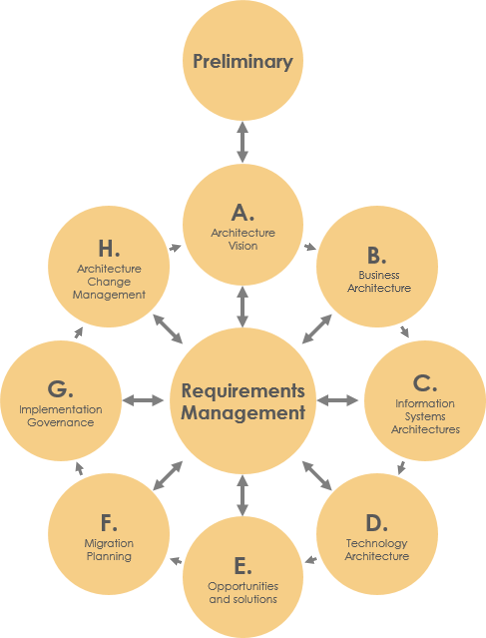Introduction
In the fast-paced realm of enterprise architecture, having a standardized and globally recognized framework is crucial. Enter TOGAF 10, the leading global standard that has garnered over 65,000 certified practitioners worldwide. But what makes TOGAF so widely adopted, and how can it empower businesses to develop, manage, and evolve their enterprise architectures efficiently?
Evolution and Best Practices
Since its inception in 1995, TOGAF has continuously evolved and been enhanced by a consortium of over 300 member organizations. This collaborative effort has resulted in a tried-and-tested approach based on global best practices. TOGAF stands out for its ability to help businesses stay robust, flexible, and efficient, facilitating organizational change.
Tailored for Success
One of TOGAF’s key strengths lies in its adaptability. The framework can be tailored to meet the specific needs of individual companies, making it a versatile tool for various industries. Moreover, TOGAF seamlessly integrates with other disciplines such as ITIL, COBIT, and PRINCE2, providing a comprehensive solution for enterprise architecture.
The Core Components
TOGAF 9 is structured around a comprehensive Body of Knowledge, consisting of seven core components. The Architecture Development Method (ADM) takes center stage, providing practitioners with a step-by-step methodology for developing, managing, and updating enterprise architectures. Let’s take a closer look at the key phases of the ADM:

- Preliminary Phase: Setting the scope and understanding the organization’s defined level of capability, with the primary output being a request for architecture work.
- Architecture Vision: Firming up deliverables from the request, defining current and future visions, and engaging stakeholders for buy-in.
- Phases B, C, and D: Defining baseline and target architectures for key domains—business, data, applications, and technology—followed by gap analysis.
- Phases E and F: Realizing the future state and creating a roadmap to achieve the target state architecture.
- Phase G: Governing change by maintaining oversight of solutions to manage risk, scope, and compliance with architecture principles.
- Phase H: Managing and documenting changes to existing architecture, considering the possibility of another cycle or iteration.
- Requirements Management: An ongoing phase to ensure constant management of change in the business and update architecture efforts accordingly.
Beyond the Core: A Holistic Approach
Beyond the core components, TOGAF 9’s Body of Knowledge offers a wealth of resources to support architecture teams in delivering successful enterprise initiatives. From guidelines and techniques to content frameworks, taxonomy, tools, and architectural reference models, TOGAF provides a comprehensive toolkit for practitioners.
Recommended TOGAF Software
Visual Paradigm for TOGAF is indeed an excellent choice for enterprise architecture (EA) endeavors. This tool seamlessly integrates with the TOGAF framework, offering a comprehensive set of features that facilitate the entire architecture development lifecycle. Here are some compelling reasons why Visual Paradigm is considered the ultimate choice for EA:
1. TOGAF Compliant:
Visual Paradigm is designed to be fully compliant with TOGAF standards. It aligns with TOGAF principles, ensuring that your architectural work is in harmony with industry best practices.
2. Intuitive User Interface:
The tool boasts an intuitive and user-friendly interface, making it accessible for both seasoned architects and those new to TOGAF. Its drag-and-drop functionality and visual modeling capabilities enhance efficiency and ease of use.
3. Comprehensive Modeling Tools:
Visual Paradigm provides a rich set of modeling tools that cover various aspects of enterprise architecture, including business, data, application, and technology domains. This ensures that all facets of your architecture are well-represented and interconnected.
4. Architecture Development Method (ADM) Support:
Visual Paradigm supports the Architecture Development Method (ADM), the core of the TOGAF framework. This allows users to seamlessly follow TOGAF’s phased approach, from initial planning to implementation.
5. Collaboration and Communication:
Effective collaboration is crucial in EA, and Visual Paradigm excels in this aspect. It offers features for team collaboration, allowing multiple stakeholders to work on the same project simultaneously. Additionally, it facilitates communication through documentation generation and presentation tools.
6. Traceability and Impact Analysis:
Visual Paradigm enables traceability, allowing you to link elements across different domains. This feature is essential for impact analysis, helping you understand the implications of changes in one part of the architecture on others.
7. Built-in ArchiMate Support:
ArchiMate, an industry-standard modeling language for enterprise architecture, is seamlessly integrated into Visual Paradigm. This ensures that your models are aligned with a widely accepted notation for EA.
8. Versatile Documentation:
The tool simplifies the documentation process by automatically generating reports and documents based on your models. This not only saves time but also ensures consistency in documentation.
9. Adaptability to Change:
Visual Paradigm’s flexibility allows for easy adaptation to changes in your enterprise. Whether it’s changes in business strategy or technology upgrades, the tool supports agility in architectural decision-making.
Conclusion
TOGAF 10‘s widespread adoption is a testament to its effectiveness in guiding businesses through the complex landscape of enterprise architecture. By providing a flexible and adaptable framework, TOGAF empowers practitioners to meet the evolving needs of organizations, making it an indispensable tool in the world of enterprise architecture.
Visual Paradigm for TOGAF stands out as the ultimate choice for enterprise architects seeking a powerful and user-friendly tool. Its TOGAF compliance, robust modeling capabilities, collaboration features, and adaptability make it an indispensable asset for successful enterprise architecture initiatives.